#e1dada Color Information
In a RGB color space, hex #e1dada is composed of 88.2% red, 85.5% green and 85.5% blue. Whereas in a CMYK color space, it is composed of 0% cyan, 3.1% magenta, 3.1% yellow and 11.8% black. It has a hue angle of 0 degrees, a saturation of 10.4% and a lightness of 86.9%. #e1dada color hex could be obtained by blending #ffffff with #c3b5b5. Closest websafe color is: #cccccc.
-
- R 88
- G 85
- B 85
-
- C 0
- M 3
- Y 3
- K 12
● #e1dada color description : Light grayish red.
#e1dada Color Conversion
The hexadecimal color #e1dada has RGB values of R:225, G:218, B:218 and CMYK values of C:0, M:0.03, Y:0.03, K:0.12. Its decimal value is 14801626.
| Hex triplet | e1dada | #e1dada |
|---|---|---|
| RGB Decimal | 225, 218, 218 | rgb(225,218,218) |
| RGB Percent | 88.2, 85.5, 85.5 | rgb(88.2%,85.5%,85.5%) |
| CMYK | 0, 3, 3, 12 | |
| HSL | 0°, 10.4, 86.9 | hsl(0,10.4%,86.9%) |
| HSV (or HSB) | 0°, 3.1, 88.2 | |
| Web Safe | cccccc | #cccccc |
| CIE-LAB | 87.588, 2.384, 0.841 |
|---|---|
| XYZ | 68.775, 71.213, 76.448 |
| xyY | 0.318, 0.329, 71.213 |
| CIE-LCH | 87.588, 2.528, 19.432 |
| CIE-LUV | 87.588, 3.993, 0.851 |
| Hunter-Lab | 84.388, -2.202, 5.359 |
| Binary | 11100001, 11011010, 11011010 |
Color Schemes with #e1dada
Alternatives to #e1dada
Below, you can see some colors close to #e1dada. Having a set of related colors can be useful if you need an inspirational alternative to your original color choice.
#e1dada Preview
This text has a font color of #e1dada.
<span style="color:#e1dada;">Text here</span>This paragraph has a background color of #e1dada.
<p style="background-color:#e1dada;">Content here</p>This element has a border color of #e1dada.
<div style="border:1px solid #e1dada;">Content here</div>.text {color:#e1dada;}.background {background-color:#e1dada;}.border {border:1px solid #e1dada;}Shades and Tints of #e1dada
A shade is achieved by adding black to any pure hue, while a tint is created by mixing white to any pure color. In this example, #060505 is the darkest color, while #fbfafa is the lightest one.
-
#060505
#060505rgb(6,5,5) -
#110e0e
#110e0ergb(17,14,14) -
#1c1717
#1c1717rgb(28,23,23) -
#271f1f
#271f1frgb(39,31,31) -
#322828
#322828rgb(50,40,40) -
#3c3131
#3c3131rgb(60,49,49) -
#473a3a
#473a3argb(71,58,58) -
#524343
#524343rgb(82,67,67) -
#5d4b4b
#5d4b4brgb(93,75,75) -
#685454
#685454rgb(104,84,84) -
#735d5d
#735d5drgb(115,93,93) -
#7d6666
#7d6666rgb(125,102,102) -
#886f6f
#886f6frgb(136,111,111)
-
#927979
#927979rgb(146,121,121) -
#9b8383
#9b8383rgb(155,131,131) -
#a48e8e
#a48e8ergb(164,142,142) -
#ac9999
#ac9999rgb(172,153,153) -
#b5a4a4
#b5a4a4rgb(181,164,164) -
#beafaf
#beafafrgb(190,175,175) -
#c7baba
#c7babargb(199,186,186) -
#cfc4c4
#cfc4c4rgb(207,196,196) -
#d8cfcf
#d8cfcfrgb(216,207,207) -
#e1dada
#e1dadargb(225,218,218) -
#eae5e5
#eae5e5rgb(234,229,229) -
#f3f0f0
#f3f0f0rgb(243,240,240) -
#fbfafa
#fbfafargb(251,250,250)
Tones of #e1dada
A tone is produced by adding gray to any pure hue. In this case, #dedddd is the less saturated color, while #fdbebe is the most saturated one.
-
#dedddd
#deddddrgb(222,221,221) -
#e1dada
#e1dadargb(225,218,218) -
#e4d7d7
#e4d7d7rgb(228,215,215) -
#e6d5d5
#e6d5d5rgb(230,213,213) -
#e9d2d2
#e9d2d2rgb(233,210,210) -
#ebd0d0
#ebd0d0rgb(235,208,208) -
#eecdcd
#eecdcdrgb(238,205,205) -
#f0cbcb
#f0cbcbrgb(240,203,203) -
#f3c8c8
#f3c8c8rgb(243,200,200) -
#f6c5c5
#f6c5c5rgb(246,197,197) -
#f8c3c3
#f8c3c3rgb(248,195,195) -
#fbc0c0
#fbc0c0rgb(251,192,192) -
#fdbebe
#fdbebergb(253,190,190)
Color Blindness Simulator
Below, you can see how #e1dada is perceived by people affected by a color vision deficiency. This can be useful if you need to ensure your color combinations are accessible to color-blind users.
